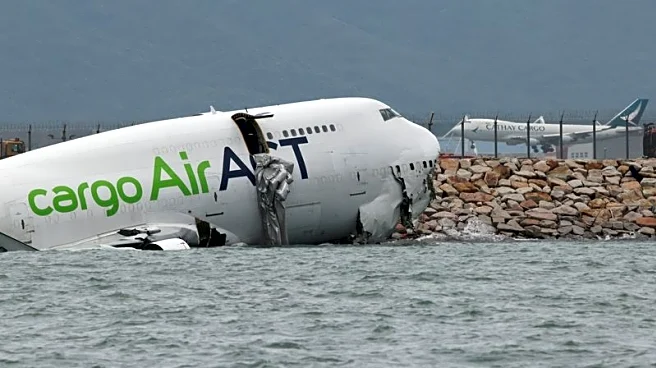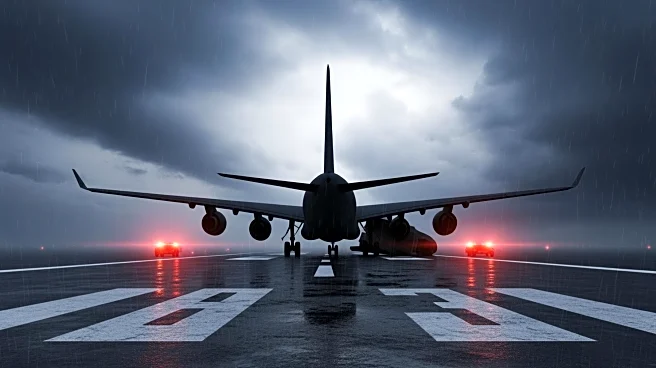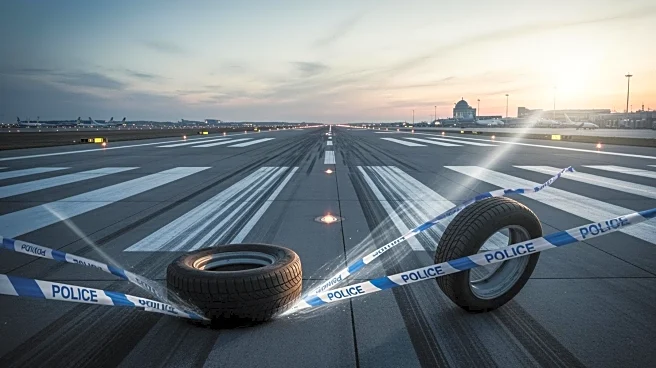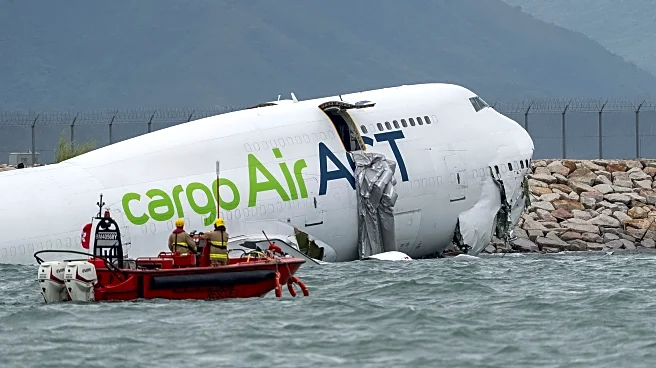What's Happening?
A cargo plane operated by Turkish carrier ACT Airlines skidded off the runway at Hong Kong International Airport early Monday, resulting in the deaths of two airport staff. The Boeing aircraft, arriving
from Dubai, veered off course and collided with an airport security patrol car, pushing it into the sea. The plane broke in two, with its tail section snapping off and the front section suffering significant damage. Four crew members onboard were sent to local hospitals for medical treatment. The incident prompted a massive emergency response involving over 200 personnel, fire engines, and boats. The airport suspended operations on its north runway, although its two other runways remain operational, minimizing disruptions to the airport's daily flights.
Why It's Important?
The accident underscores the critical importance of airport safety protocols and emergency response systems. Hong Kong International Airport, one of the world's busiest, has a strong safety record, making this incident particularly notable. The event may lead to increased scrutiny of cargo flight operations and safety measures at major airports. The fatalities highlight the risks faced by airport ground staff, potentially prompting reviews of safety procedures and vehicle operations on tarmacs. The incident also raises questions about the coordination between airlines and airport authorities during emergencies, which could influence future policy and operational changes.
What's Next?
Investigations are likely to focus on the cause of the plane's deviation from its course and the subsequent collision with the patrol car. Authorities may review the safety protocols for ground vehicles and aircraft operations at Hong Kong International Airport. The findings could lead to changes in airport safety regulations and operational procedures. Airlines operating at HKIA might face increased scrutiny and potential adjustments in their emergency response strategies. The incident may also prompt discussions on improving communication and coordination between airlines and airport authorities during critical situations.
Beyond the Headlines
The accident may have broader implications for international aviation safety standards, particularly concerning cargo flights. It could lead to a reevaluation of the risks associated with wet-leased aircraft operations, as the plane was operated by ACT Airlines under an Emirates flight number. The incident might also influence global airport safety practices, encouraging airports worldwide to reassess their emergency preparedness and ground staff safety measures. Additionally, the event could impact public perception of air travel safety, especially in regions with high air traffic.













